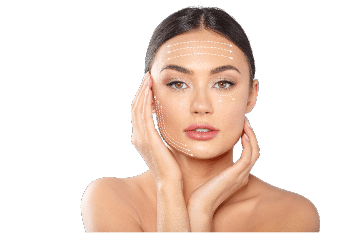Be sure that acne is a problem. Layering makeup to balance skin tone from acne redness while trying to minimize skin texture issues related to acne scars and blemishes is a balancing act that often seems impossible. While we can’t wave a giant wand, say, “acne is gone,” and relieve you of all that stress—although we really wish we could—there are some simple tips you can take to simplify your daily beauty routine along with Follow two important recommendations. Maybe break the cycle of acne once and for all.
Choose color correction options
Fighting acne discoloration and scarring with concealer alone is frustrating. While we don’t doubt that there are some heavy concealers out there, too many layers of a thick product will emphasize textural changes from scars to fine lines, which will only draw more attention to your acne — the opposite of the goal. You. Trying to achieve Instead, stick to the lighter layers of concealer and foundation mentioned in the first tip, and rely on color correctors to top it off.
When it comes to choosing the right color corrector, the rule of thumb is to choose a color that is the opposite of the shade you want to conceal when looking at the color wheel. This makes green concealers the best choice for redness from acne, while peach or orange concealers are best for neutralizing the blue or purple undertones in acne scars. Simply apply the color corrector to the desired areas and tap gently with your finger.
An alternative to adding another layer of makeup to trouble spots may be to opt for a non-surgical skin resurfacing treatment plan. For those dealing with acne scars rather than active acne breakouts, 4D Skin Clinic’s targeted skin peeling treatments utilize tiny pins and innovative radio frequency (RF) technology to deliver thermal energy (heat) deep within the surface. Skin uses. It stimulates the skin’s natural repair cycle, increases skin-healing collagen levels, and supports the renewal of healthy skin cells in the targeted area. It helps heal damaged skin and reduces the appearance of acne scars for smoother, more even-toned skin that can help you skip color correctors and simplify your morning beauty routine.
Stop reaching for everything “oil free”
Oil-free formulas seem like the logical choice for people with acne and oily skin, but it’s important to note that not all oils have the same effect on your skin. Blocking oils should still be avoided, as these are not absorbed by the skin and layer heavily on the surface. While they don’t tend to irritate people with dry to normal skin, these ingredients tend to collect and sit in the pores of people with acne-prone or combination skin because they mix well with oil. The skin’s natural oils (sebum) are not combined. It is present in higher levels for people with this type of skin. As a result, the pores become blocked and the shedding cycle begins again. Blocking ingredients to avoid include cosmetics containing phthalates, paraffin, mineral oil, and petrolatum.
On the other hand, foundations and primers containing hydrating plant oils such as grapeseed, evening primrose, and jojoba can benefit acne-prone skin, especially when used to balance acne-prone skin care products. In addition to better mimicking the skin’s natural oils, these naturally derived plant oils often offer antibacterial and anti-inflammatory benefits that help soothe existing breakouts while keeping acne-causing bacteria at bay. he does.
Try a small bar
This may seem like a weird beauty tip, but having a simple roll of duct tape on hand can be a huge help on days when skin is feeling a little dehydrated and flaky. Sometimes, a little too much acne treatment cream can dry out the skin overnight. Applying makeup on dry, flaky skin can cause many problems, from accentuating uneven texture to smudging and even more problems with clogging pores. For example, when exfoliating may irritate your skin more or when you don’t, dab some masking tape on dry areas to gently lift the loose dead skin. Follow with a moisturizing moisturizer or primer, then layer your light makeup as usual.
Give your skin a break from makeup
We’re into the no-makeup trend, but sometimes going no-makeup is the best option for your skin. While lighter makeup products may not cause breakouts, there are ways they can cause acne or prevent your skin from healing after a flare-up. For example, some products may contain ingredients that interact with certain elements in other products. This combination and the resulting reaction can irritate sensitive or acne-prone skin or cause dehydration and lead to more breakouts. For those who wear makeup daily, even if it’s in lighter layers, taking a break or dialing back on the products used can give acne-prone skin a little time to breathe and heal.
Considering going makeup-free can be scary and even stressful, especially when your skin may be right in the middle of a full-blown breakout, but there are options to help your skin heal during this break. Venus Versa acne treatments using Intense Pulsed Light (IPL) technology use the dual light effects of red and blue light to reduce the symptoms of current acne breakouts, such as redness and inflammation, while killing acne-causing Propionibacterium Acnes (P. acnes). They take. Bacterial treatments are quick and usually take between 15 and 20 minutes. While your skin will be sensitive to the sun after acne treatment sessions, there’s no need to take a break, so if you decide to go back to makeup, you can apply it right away—after SPF, of course. The result is an acne treatment plan that fights current and future breakouts for clearer, healthier skin.

